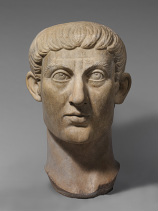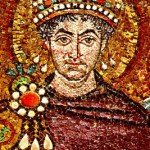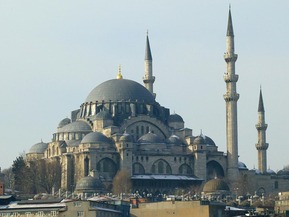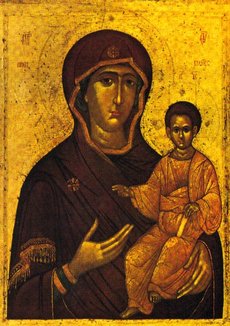Byzantine Art
Emperor Constatine

The Byzantine era began roughly around 330 AD and lasted until 1453. Emperor Constantine changed the capital of the empire from Rome to Byzantium, which later became Constantinople. Byzantium, or Constantinople, was located at a major intersection of east and west trade, and was also called "New Rome" because it replaced the ancient capital. Emperor Constantine was the first Christian ruler and commissioned churches and other religious building to be constructed. The most famous church the Constantine had built was the Church of Hagia Sophia. Art and architecture flourished under Constantine's rule due to the multitude of patrons in the empire.
Iconoclasm
Iconoclasm usually refers to the destruction of religious icons or images, in Eygpt, new pharaohs would destroys images of their predecessors. However, in the Byzantine era, the debate was about how these icons should be used; there was fear that people would misdirect their worshipping to the icons. Most icons made during this time were made by human hands, such as pendants, then there were things that were not made by human hands, called acheiropoieta. Acheiropoieta includes things life the Mandylion, the cloth that has the imprint of the face of Christ or Keramion, the tile that also has the imprint from the cloth. The most famous Byzantine icon is the Virgin Hodegetria, which had an enormous imapct on the representations of the Virgin Mary and Christ as a child.
Justinian I

Justinian I reigned from 527 AD - 565 AD, an almost forty year reign, he was a Christian, and very militant. When his policies first came into effect there were many riots known as the Nika riots, during these riots many religious building were burned, including the Church of Hagia Sophia. After these riots were finished, Justinian I rebuilt these buildings which were destroyed including Hagia Sophia, he also sought to destroy traces of Greek and Roman paganism.
Ivory in the Byzantine Era
Ivory was highly used during this time, it's smooth, has a good quality, and a creamy color and it was used to make many religious items as well as luxury items. There is no warping over time, it does not break as easily as wood does, these qualities were very treasured. Ivory was used largely to make religious items, which were sometimes made to be insides private homes. The most common items that were made were consular diptychs, pyxides, and caskets. A consular diptych is two ivory plaques binded together by hinges, these were used to announce nominations for councils. Pyxides are covered boxes that have images carved into them.



